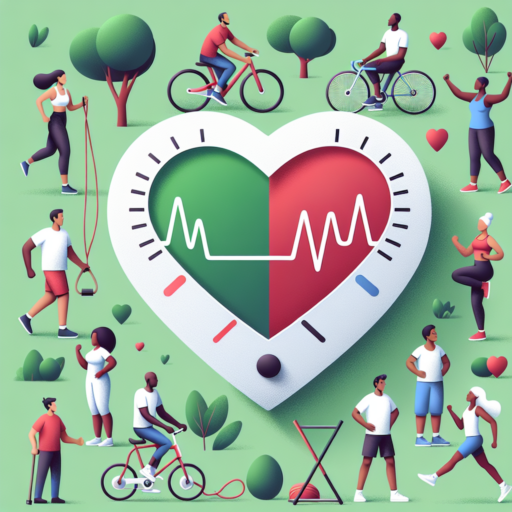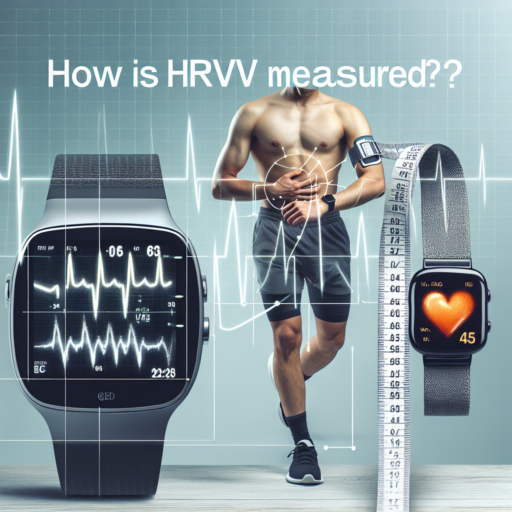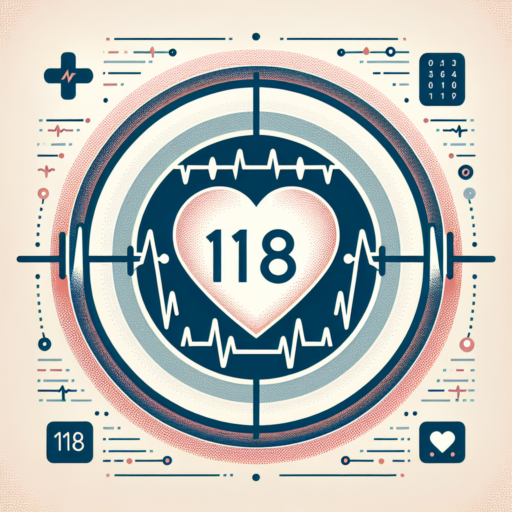Understanding the Concept of Cardio Recovery Number
The term «Cardio Recovery Number» might not be something you hear every day, yet it plays a pivotal role in the world of fitness and personal health. At its core, this concept revolves around measuring how quickly your heart rate returns to normal after a bout of intense exercise. It’s a valuable metric for gauging your cardiovascular fitness and understanding how effectively your body recovers from physical stress. But what does this number really tell us, and why is it so important for those looking to optimize their workout routines?
Firstly, the cardio recovery number is a direct indicator of your heart’s efficiency. After reaching a peak heart rate during exercise, a quicker decrease back to resting levels suggests a high level of cardiovascular fitness. This is because a fit heart pumps more blood with each beat, requiring fewer beats per minute to supply your body with the oxygen it needs. Therefore, tracking this number over time can provide tangible evidence of improvements in your fitness levels, or serve as a warning sign if your recovery rate begins to stagnate or worsen.
Secondly, understanding and monitoring your cardio recovery number can help tailor your workout to suit your body’s needs. By being attentive to how long it takes your heart rate to normalize, you can adjust the intensity and duration of your workouts to ensure they are neither too easy nor too strenuous. This concept is essential for designing a fitness program that not only challenges you but also promotes long-term heart health and endurance-building.
How to Calculate Your Cardio Recovery Number
Understanding your cardio recovery number can be a crucial aspect of optimizing your fitness regimen. This metric reflects how quickly your heart rate returns to normal after exercise, indicating the efficiency and health of your cardiovascular system. Below, we detail the steps to determine this important figure, ensuring you have the tools to monitor your heart’s recovery capability.
First, it’s essential to record your peak heart rate during a workout. Engage in a cardio exercise that elevates your heart rate significantly — running, cycling, or high-intensity interval training (HIIT) are excellent choices. Use a reliable heart rate monitor to capture the highest number you reach during your activity. This represents the intensity peak from which your recovery will be measured.
Step by Step Guide to Calculate
- Immediately after your workout, take note of your peak heart rate.
- After a one-minute period of rest post-exercise, record your heart rate again.
- Subtract the one-minute post-exercise heart rate from your peak heart rate. This difference is your cardio recovery number.
Calculating your cardio recovery number regularly can provide valuable insights into your cardiovascular health and the effectiveness of your training regimen. A smaller difference between your peak heart rate and your one-minute post-exercise heart rate suggests a healthier heart and higher cardiovascular efficiency. Conversely, a larger difference might indicate areas where your endurance and cardiovascular conditioning could be improved. Emphasizing the importance of consistent measurement, this practice can encourage a progressive improvement in your overall fitness level.
The Significance of a Good Cardio Recovery Number in Fitness
Understanding the significance of a good cardio recovery number is essential for those invested in their fitness journey. It serves as a crucial indicator of cardiac efficiency and overall physical resilience. A strong cardio recovery number not only signifies a heart that can quickly return to its resting rate post-exercise, but also highlights an individual’s cardiovascular fitness level. This metric can be vital for athletes and fitness enthusiasts alike in measuring their progress and adjusting their training regimens accordingly.
Furthermore, a robust cardio recovery number is associated with reduced risks of cardiovascular diseases. Quick recovery times post-exercise suggest a healthy, efficient heart, capable of managing stress and strain with ease. This efficiency can translate into a lower probability of encountering heart-related health issues in the future. As such, paying attention to and improving your cardio recovery rate becomes an investment in your long-term health and well-being.
To enhance your cardio recovery number, incorporating a variety of cardiovascular exercises into your routine is crucial. Mixing high-intensity workouts with steady-state cardio can challenge your heart in different ways, promoting cardiovascular health and improving recovery rates. Additionally, adequate rest and proper nutrition play substantial roles in aiding your heart’s recovery and ensuring you achieve your fitness and health objectives efficiently.
Improving Your Cardio Recovery Number: Tips and Strategies
Understanding and enhancing your cardio recovery number is crucial for athletes and fitness enthusiasts alike. It’s a significant indicator of how efficiently your heart recovers after exercise, reflecting your cardiovascular health and fitness level. Implementing effective strategies can dramatically improve this vital sign, leading to better performance, endurance, and overall well-being.
First and foremost, incremental training plays a pivotal role in improving your cardio recovery number. Gradually increasing the intensity and duration of your workouts allows your heart and body to adapt to higher stress levels without overexerting. Incorporating a variety of cardio exercises, such as jogging, cycling, and swimming, can also prevent plateauing and enhance your heart’s recovery rate.
Optimizing Post-Workout Recovery
Post-workout recovery is another critical aspect of improving your cardio recovery number. This includes adequate hydration, proper nutrition, and sufficient rest. Consuming antioxidant-rich foods and staying well-hydrated help in flushing out toxins, which can impact recovery times. Meanwhile, ensuring quality sleep promotes healing and allows the heart rate to return to its resting state, vital for cardiovascular health.
Real-Life Examples: What Does a Good Cardio Recovery Number Look Like?
Understanding what constitutes a good cardio recovery number is key to evaluating the effectiveness of your cardiovascular workouts. Typically, this number reflects how quickly your heart rate returns to its resting rate after exertion. Health experts suggest that a robust recovery rate is indicative of a well-conditioned heart. But what do these numbers actually look like in real-life scenarios?
Individual Variations are paramount. It’s crucial to acknowledge that «good» cardio recovery measurements can vary widely among individuals, influenced by factors such as age, fitness level, and even genetics. For instance, a young athlete might notice their heart rate drop by over 30 beats per minute (bpm) within the first minute post-exercise, which is often seen as an excellent recovery rate. In contrast, for many adults, a reduction of 15-25 bpm during the same time frame could still represent a solid indication of cardiovascular health.
In everyday contexts, Monitoring Progress is more beneficial than comparing numbers with peers. For someone just embarking on a fitness journey, observing improvements in their recovery rate over time can offer meaningful insights into their cardiovascular fitness improvements. This might start with a modest 10 bpm decrease in the first minute after stopping the exercise, gradually increasing as they get fitter. Such improvements, though may seem small at first, are real-life attestations of enhancing cardiovascular efficiency.
Comparing Cardio Recovery Numbers: Athletes vs. Non-Athletes
When discussing health and fitness, recovery rates after cardiovascular exercises are often a point of focus. By comparing the cardio recovery numbers between athletes and non-athletes, intriguing insights can be gleaned about the efficiency of different bodies in handling physical stress. This comparison sheds light on the underlying mechanisms that contribute to quicker recovery times in some individuals over others.
What Determines Cardio Recovery?
The rate at which a person’s heart rate returns to normal after exercise, commonly known as the recovery rate, is influenced by several factors. Among these, physical conditioning, age, and the presence of cardiovascular diseases play a crucial role. Athletes, by virtue of their rigorous training routines, often exhibit improved cardiovascular efficiency. This leads to a faster return to their resting heart rate post-exercise compared to non-athletes who may have less cardiovascular conditioning.
Recovery Rates: Athletes vs. Non-Athletes
A key distinction in the recovery rates between athletes and non-athletes is how quickly their heart rate decreases within the first minute after stopping exercise. For athletes, a drop of more than 20 beats per minute is indicative of a good recovery rate and overall cardiovascular health. In contrast, non-athletes might experience a slower decrease, reflecting a longer recovery period. This difference underscores the impact of regular, intense physical activity on the heart’s ability to recuperate.
The Role of Technology in Monitoring Your Cardio Recovery Number
In the realm of health and fitness, understanding your body’s response to exercise is crucial for tailoring workout plans and preventing overexertion. The Cardio Recovery Number, a critical metric indicating how quickly your heart rate returns to normal after exertion, has gained prominence. With advancements in technology, monitoring this number has become more accessible and accurate, offering insights that were once exclusively available in professional settings.
Wearable tech devices, such as fitness trackers and smartwatches, are at the forefront of this technological revolution. These gadgets are equipped with heart rate sensors and sophisticated algorithms designed to analyze and interpret heart rate variability and recovery times. This means that individuals can now monitor their Cardio Recovery Number in real-time, directly from their wrists. Such convenience allows for immediate adjustments to workout intensity, ensuring that training remains within optimal heart rate zones for health and performance gains.
Furthermore, the integration of these devices with mobile applications and health platforms has facilitated a more comprehensive approach to tracking cardiovascular health. Users can record and analyze their recovery rates over time, giving them a clearer picture of their cardiorespiratory fitness improvements or identifying potential red flags in their recovery patterns. By having these insights at their fingertips, individuals are empowered to make informed decisions about their physical activity and recovery strategies, thereby enhancing the effectiveness of their fitness routines.
How Your Cardio Recovery Number Affects Overall Health
Understanding your Cardio Recovery Number can provide insightful data into your cardiovascular system’s efficiency and its impact on your overall health. This number, often measured after a period of intense physical activity, reflects how quickly your heart rate returns to normal. A faster recovery rate is typically indicative of a stronger, more resilient cardiovascular system. This efficiency is not just a matter of athletic performance but a crucial aspect of long-term health and vitality.
When we delve deeper into the mechanics, the Cardio Recovery Number goes beyond mere fitness indicators; it is a direct reflection of your heart’s ability to adapt and respond to stress. This adaptation is essential not only for athletes but for individuals across all age groups and fitness levels. A healthy recovery rate is associated with reduced risks of cardiovascular diseases, including heart attacks and strokes. Moreover, it serves as an early warning system, allowing for timely interventions before potential heart-related issues become severe.
Improvements in your Cardio Recovery Number can be achieved through consistent and varied cardiovascular training. Activities such as running, swimming, cycling, and even brisk walking, when done regularly, enhance heart health and efficiency. It’s not about pushing your limits every day but incorporating a balanced mix of intensity levels in your workouts. Regular monitoring of your recovery rate can guide your training decisions, helping you to tailor your exercise regimen for optimal heart health and overall well-being.
Frequently Asked Questions About Cardio Recovery Numbers
Understanding cardio recovery numbers is crucial for anyone engaged in regular physical activity. These numbers reflect how efficiently the heart returns to its resting rate post-exercise, indicating overall cardiovascular health. Below, we address some of the most common inquiries surrounding this vital metric.
What Are Cardio Recovery Numbers?
Cardio recovery numbers are a measure of how quickly your heart rate decreases after a period of physical exertion. Typically, a faster decrease in heart rate post-exercise is associated with better cardiovascular fitness. Health professionals often use these numbers to gauge an individual’s heart health and stamina.
How Can You Measure Your Cardio Recovery Rate?
Measuring your cardio recovery rate involves noting your heart rate at the peak of exercise and then again after a 1- to 2-minute cool-down period. The difference in these numbers illustrates your recovery rate. A larger difference generally signifies a stronger, more efficient heart. Devices like smartwatches and heart rate monitors can provide these measurements accurately and conveniently.
Why Are Cardio Recovery Numbers Important?
Cardio recovery numbers are not just indicators of fitness level; they also offer insights into your long-term health. Research suggests that individuals with faster cardio recovery times may have a lower risk of cardiovascular diseases. Thus, monitoring these numbers can help you understand and potentially improve your heart health.










